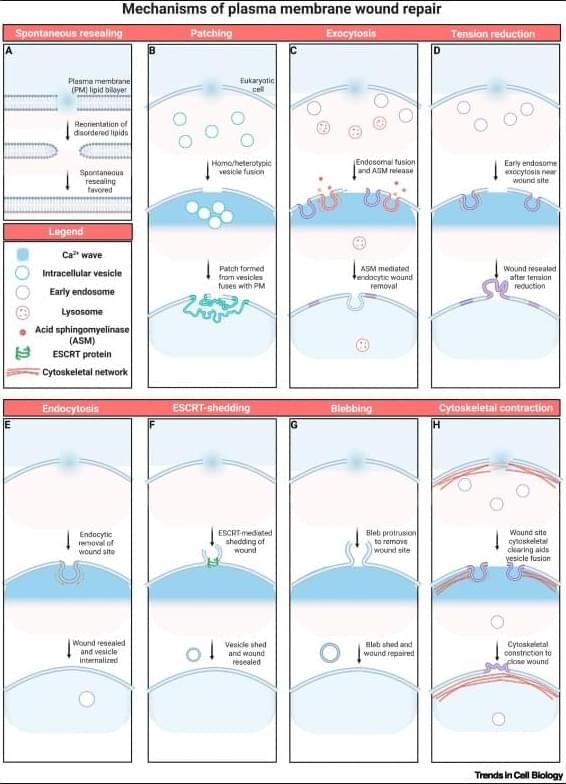The plasma membrane (PM) of eukaryotic cells is constantly exposed to many challenges that can cause wounds that necessitate rapid and efficient repair mechanisms to ensure cell survival. PM wound repair not only encompasses the immediate resealing of the membrane barrier, which involves exocytosis of internal vesicles to deliver membrane, but also subsequent processes that are essential to restore cellular homeostasis. These include restoration of membrane and cortical cytoskeleton structures, as well as replenishment of intracellular organelles consumed during resealing. Recent evidence suggests that the different steps in PM repair, resealing, restructuring, and restoration, are spatiotemporally correlated and regulated by membrane tension. Recent advances in understanding the different phases of PM repair are reviewed and a time-dependent classification of repair mechanisms is proposed.
